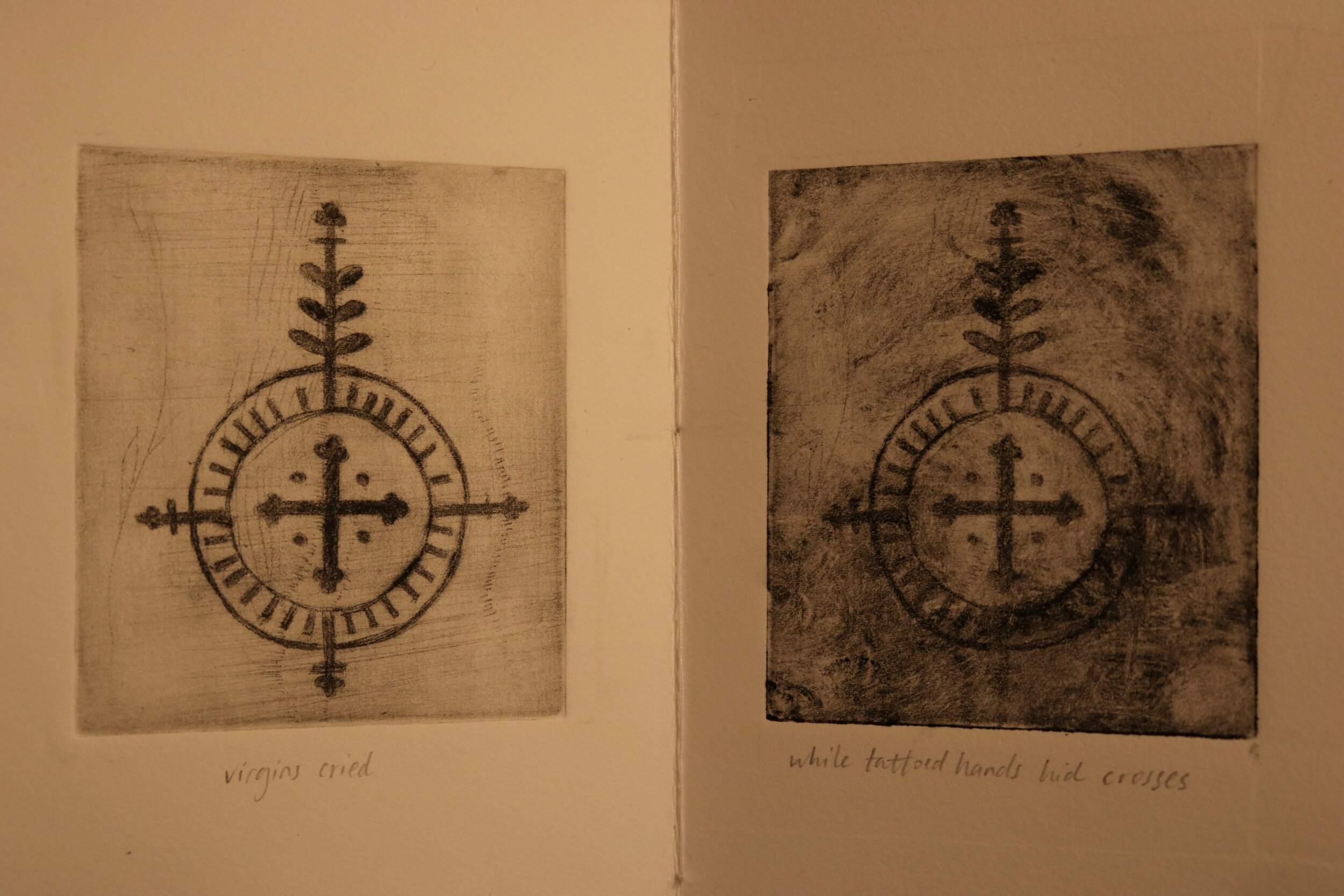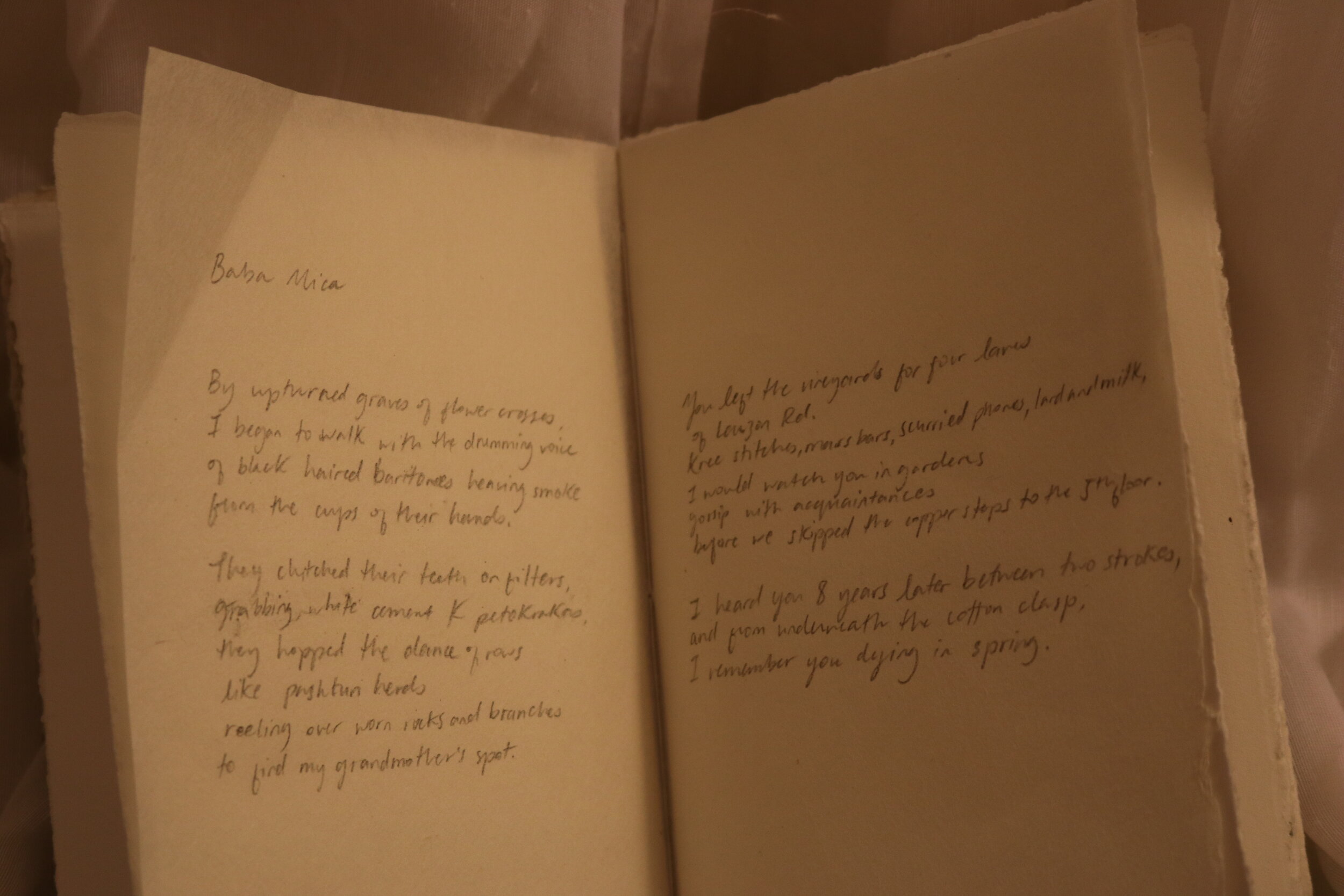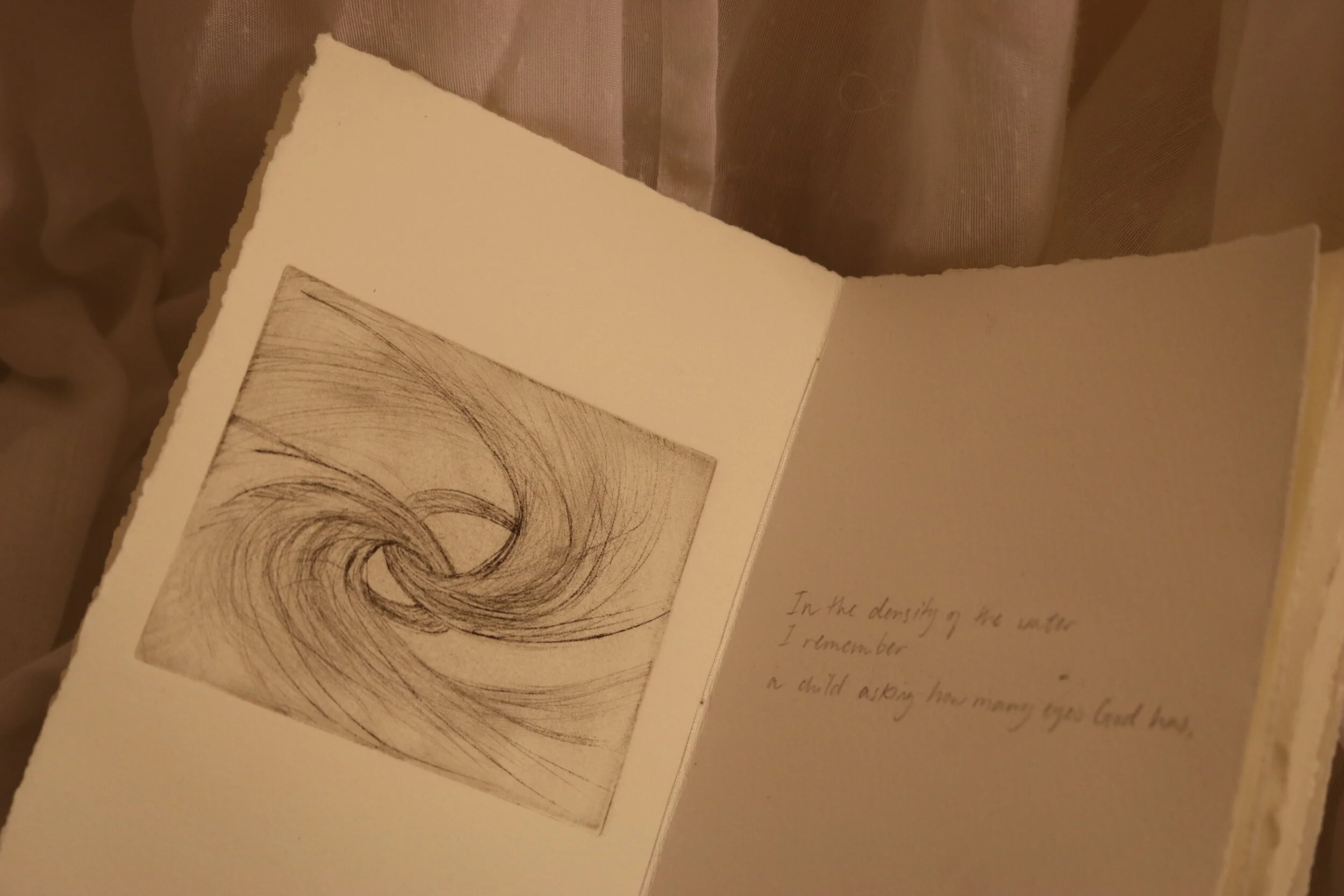
Poetry Prints, 2020
drypoint etching, graphite, and embossment on hand bound Somerset Satin and gampi silk tissue
Recently my brother, Jovan Stefanov, and Nick Hildenbrand gave me the task to illustrate their in-progress book of poetry. This hand bound book was my first attempt to consider their poems as prints, and became my preliminary work. I chose three of Jovan’s poems and focused on certain lines that stood out to me to create imagery from.
The number three, referring to the Trinity, is a motif in the book. Three intaglio prints, three rubbings, three poems, each with three page spreads, bound together by three lines of stitching.
The poem “Baba Mica” is about my grandmother, Milica, who died when I was a child. She lived in Canada for a short time before I was born, leaving the mountains and vineyards that inspired my intaglio print. My brother unknowingly made a reference to her floral cross-patterned crochet work with the first line of his poem, “By upturned graves of flower crosses.” I found the embossing process difficult, and spent hours contemplating her work while pressing the paper down with my fingers. It was an indirect but intimate interaction with my grandmother that I did not expect from this project.
In the last lines of “By Belle Isle on Day Break,” he describes a child asking a priest about the eyes of God; in Orthodox iconography, certain angels of the highest order (Seraphim, Cherubim, and Throne) are depicted with many eyes. I grew up with a strong connection to the Orthodox church since my father is an iconographer and I work with him often, I once painted the eyes on a Throne angel. This imagery, as well as my connection to Orthodox art practices, led me to create an drypoint etching of an abstracted angel. If you look at the print from an angle, you might see the shape of an eye in the centre. The embossment is taken from an icon triptych frame from local Catholic school that was demolished over 40 years ago.
“St. Elijah’s Day” is the English translation of the Macedonian Republic Day Ilinden, on which the Ilinden Uprising took place in 1903 and established the Kruševo Republic, the first republic in the Balkans. After only thirteen days this establishment ended with tens of thousands casualties and losses. During Ottoman rule, in parts of the Balkans it was a common practice to tattoo a small cross on a young girl’s forehead to protect her from rape and forced marriage. My great-grandmother had one of these tattoos. Since the Macedonian Orthodox tattoos were very minimalistic, I chose to base my etching on the more elaborate Croatian Catholic designs which use some ancient Slavic symbolism. The Turkish lira is a symbol of Macedonian history with Ottoman rule, given to girls who were bought as slaves and ironically used in our traditional costumes.


















